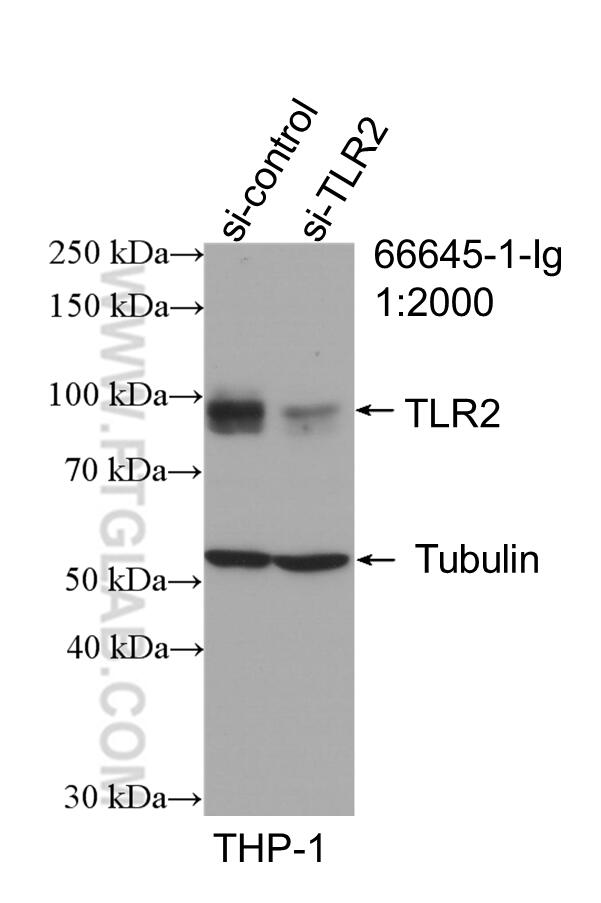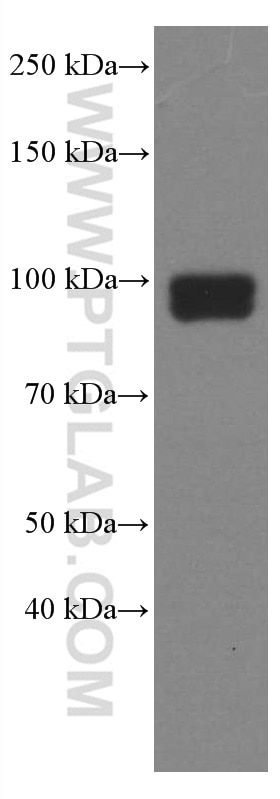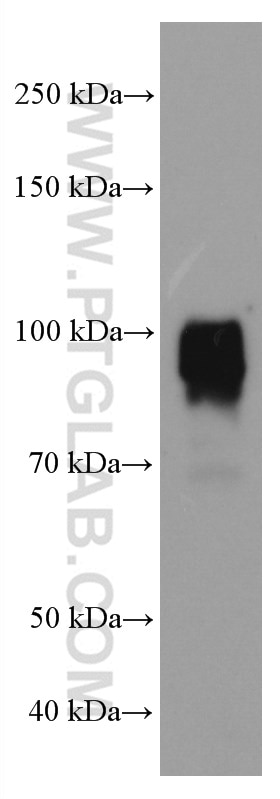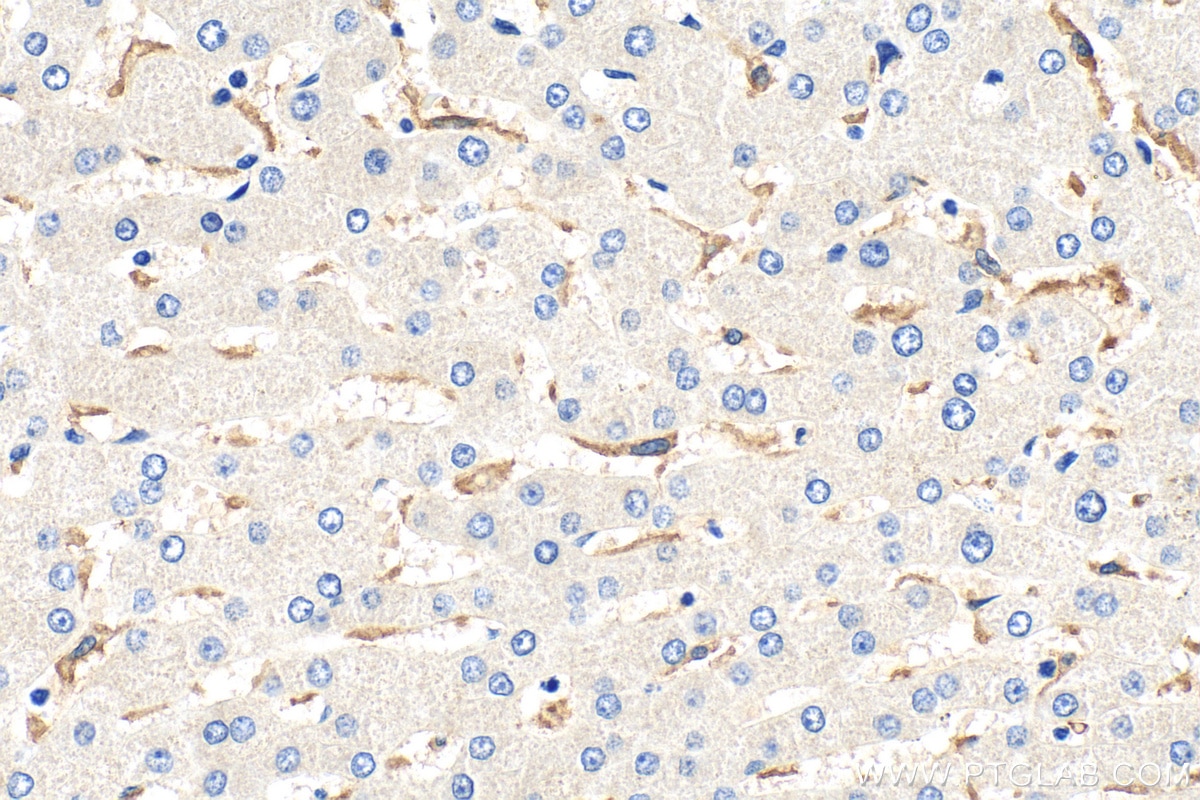Validation Data Gallery
Tested Applications
| Positive WB detected in | THP-1 cells, U-937 cells |
| Positive IHC detected in | human liver tissue Note: suggested antigen retrieval with TE buffer pH 9.0; (*) Alternatively, antigen retrieval may be performed with citrate buffer pH 6.0 |
| Positive IF/ICC detected in | THP-1 cells |
Recommended dilution
| Application | Dilution |
|---|---|
| Western Blot (WB) | WB : 1:500-1:2000 |
| Immunohistochemistry (IHC) | IHC : 1:200-1:800 |
| Immunofluorescence (IF)/ICC | IF/ICC : 1:50-1:500 |
| It is recommended that this reagent should be titrated in each testing system to obtain optimal results. | |
| Sample-dependent, Check data in validation data gallery. | |
Published Applications
| KD/KO | See 1 publications below |
| WB | See 18 publications below |
| IHC | See 1 publications below |
| IF | See 4 publications below |
Product Information
66645-1-Ig targets TLR2 in WB, IHC, IF/ICC, ELISA applications and shows reactivity with human samples.
| Tested Reactivity | human |
| Cited Reactivity | human, mouse |
| Host / Isotype | Mouse / IgG2a |
| Class | Monoclonal |
| Type | Antibody |
| Immunogen |
CatNo: Ag25626 Product name: Recombinant human TLR2 protein Source: e coli.-derived, PET28a Tag: 6*His Domain: 19-302 aa of BC033756 Sequence: KEESSNQASLSCDRNGICKGSSGSLNSIPSGLTEAVKSLDLSNNRITYISNSDLQRCVNLQALVLTSNGINTIEEDSFSSLGSLEHLDLSYNYLSNLSSSWFKPLSSLTFLNLLGNPYKTLGETSLFSHLTKLQILRVGNMDTFTKIQRKDFAGLTFLEELEIDASDLQSYEPKSLKSIQNVSHLILHMKQHILLLEIFVDVTSSVECLELRDTDLDTFHFSELSTGETNSLIKKFTFRNVKITDESLFQVMKLLNQISGLLELEFDDCTLNGVGNFRASDNDR 相同性解析による交差性が予測される生物種 |
| Full Name | toll-like receptor 2 |
| Calculated molecular weight | 784 aa, 90 kDa |
| Observed molecular weight | 90-100 kDa |
| GenBank accession number | BC033756 |
| Gene Symbol | TLR2 |
| Gene ID (NCBI) | 7097 |
| RRID | AB_2882003 |
| Conjugate | Unconjugated |
| Form | |
| Form | Liquid |
| Purification Method | Protein A purification |
| UNIPROT ID | O60603 |
| Storage Buffer | PBS with 0.02% sodium azide and 50% glycerol{{ptg:BufferTemp}}7.3 |
| Storage Conditions | Store at -20°C. Stable for one year after shipment. Aliquoting is unnecessary for -20oC storage. |
Background Information
TLR2, also known as CD282, is a Toll-like receptor (TLR) family member. TLR receptors are type I integral transmembrane glycoproteins that play a fundamental role in pathogen recognition and activation of innate immunity. TLR2 is expressed by immune cells including monocytes/macrophages, polymorphonuclear leukocytes (PMLs), and dendritic cells, and is also expressed by some no-immune cells including endothelial and epithelial cells (PMID: 21428911; 22566960). TLR2 forms heterodimers with TLR1 and TLR6, which is the initial step in a cascade of events leading to significant innate immune responses, development of adaptive immunity to pathogens, and protection from immune sequelae related to infection with these pathogens (PMID: 22566960).
Protocols
| Product Specific Protocols | |
|---|---|
| IF protocol for TLR2 antibody 66645-1-Ig | Download protocol |
| IHC protocol for TLR2 antibody 66645-1-Ig | Download protocol |
| WB protocol for TLR2 antibody 66645-1-Ig | Download protocol |
| Standard Protocols | |
|---|---|
| Click here to view our Standard Protocols |
Publications
| Species | Application | Title |
|---|---|---|
Brain Behav Immun EZH2-mediated suppression of TIMP1 in spinal GABAergic interneurons drives microglial activation via MMP-9-TLR2/4-NLRP3 signaling in neuropathic pain | ||
Clin Transl Med Monocyte biomarkers define sargramostim treatment outcomes for Parkinson's disease. | ||
Life Sci The novel mechanism of human norovirus induced diarrhea: Activation of PKD2 caused by HuNoVs destroyed AQP3 expression through AP2γ in intestinal epithelial cells | ||
Microbes Infect Corydalis Saxicola Bunting Total Alkaloid Eliminates Porphyromonas gingivalis strain 33277 Internalized into Macrophages by Inhibition of TLR2 | ||
Front Microbiol PPARγ Ameliorates Mycobacterium tuberculosis H37Ra-Induced Foamy Macrophage Formation via the ABCG1-Dependent Cholesterol Efflux Pathway in THP-1 Macrophages. | ||
ACS Omega Azilsartan Suppressed LPS-Induced Inflammation in U937 Macrophages through Suppressing Oxidative Stress and Inhibiting the TLR2/MyD88 Signal Pathway. |





